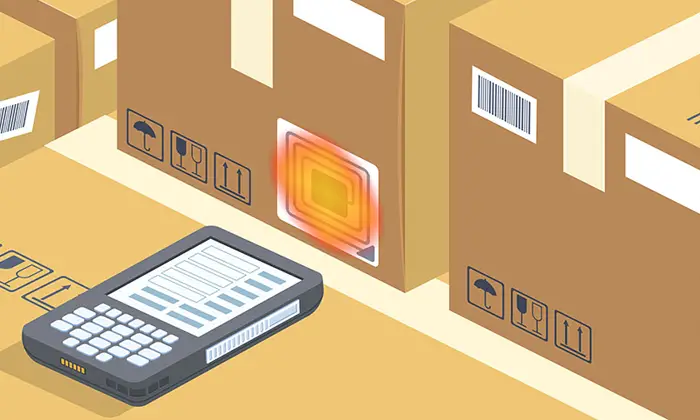Accurate asset tracking and inventory management is the foundation of every business’s operational success. Yet most organizations are guilty of wasted time and expensive delays or losses due to inefficient management of their valuable possessions. An untraceable file, shoplifted merchandise, loss of returnable transit items, or consistent supply chain pilferage – all these issues can threaten the business’s integrity and impair its competitive position in the market.
Clearly, there is a need for better management and traceability of important assets in real time!
Traditionally, companies have been tracing their assets and inventory using serial numbers and spreadsheets, or through barcode labels. However, these methods are not only prone to human error but also require significant amount of time and manual labor. One way to quickly and smartly enhance your asset management efficiency is by utilizing an end-to-end digital traceability system of Radio Frequency Identification (RFID) technology.
What Is RFID Asset Tracking?
Radio Frequency Identification, or RFID, consists of small computer chips or RFID tags that can transmit or receive crucial product information through radio waves or communications. This information is received by a reader and is further stored and analyzed by an intelligent RFID asset management software. With excellent range and automated working, the RFID technology can provide accurate, real-time data for both fixed company assets and mobile inventory at each step of movement, inside or outside the premises.
Choosing The Right RFID Tags For Asset Tracking
RFID tags have two categories based on their ranges and capabilities. Selecting the right RFID tag primarily depends on the environment they are to be used in, the data requirements, and the size of the items to be traced.
Passive RFID Tags
The passive RFID tags are information embedded chips that have no power of their own. Their information is accessed through the radio frequency energy transmitted from RFID readers or antennas. The flexibility and cost-effectiveness of these tags makes them an ideal choice for item-level tracking of company assets and many consumer goods.
Active RFID Tags
Active tags come with a built-in power source and their own transmitter (called an Ultra High Frequency or UHF solution). That’s why active tags offer longer read ranges of up to 100m. Active tags can sustain challenging environments and can support sensors that measure and transmit conditions like light, temperature, and humidity of vehicles and cargo containers. However, they are typically larger and more expensive and have a shorter lifespan than the passive tags.
RFID Can Automate Your Asset Tracking And Management
Efficient traceability begins with prompt and accurate product identification. RFID technology can automate the task of product identification at each step of the process that is receiving, packing, shipping, and storage operations. RFID-embedded software can read items in motion, thus eliminating the need for physical touch or eye contact. The reader can provide an accurate scan of several dozens of items in its range at once from a fixed location! The technology can provide businesses with highly-accurate and reliable product tracking and management functionality throughout the supply chain.
RFID tags with high on-board memory storage capacity can hold more information about an asset. In remote areas where back-end application or databases are not available, the tag can be used to relay information about maintenance activities and other details.
RFID offers more than allowing you to follow a product at every step of its supply chain. You can enjoy the convenience of greater real-time visibility of inventory traffic. This also means you can even learn about each product’s interaction with the final customer or consumer. RFID technology facilitates a unique bird’s-eye view to the manufacturers and provides real-time visibility of supply chain processes. This includes raw material transportation, status on work in process (WIP) items, inbound and outbound shipments, metrics and analytics or inventory counts, as well as process traceability.

Benefits Of Using An RFID Asset Tracking Solution
- One employee can now gather inventory information of an entire room. Numerous tags can be read at once without worrying about line-of-sight between the tags and the scanner.
- Important product information such as location, usage, and maintenance status can now be stored on the asset using RFID tags. This enables businesses to manage more accurate asset life cycles.
- Companies can maintain an accurate record of their inventory or assets, thereby reducing downtimes or search times.
- Thefts can be prevented by generating real-time alerts or alarms that will immediately notify if any items move into unauthorized areas or move out of the commercial premises without approval.
- By integrating RFID tags with sensors and GPS technology, data related to an asset’s condition can be gathered easily.
- An RFID solution, when clubbed with a wireless LAN, makes asset tracking and identification from a remote location prompt and straightforward.
What Does Traceability Do For Your Business?
Thanks to the granular data an RFID solution generates, businesses can now determine any weak links or loops in the supply chain management. It also allows for authentication of individual products and their components. The data helps manufacturers track conditions and prevent product damage, deviation or waste, and even help take stringent steps to keep a check on the products’ carbon footprint.
The data gathered through RFID tracking can empower you to make informed and immediate decisions about your business. These actionable insights can help optimize the business operations, protect and shape your brand’s image, facilitate real-time contact with partners as well as end users, thus making every aspect of your business more efficient and coordinated.
